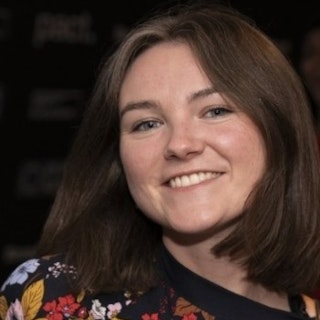The unusual story of how Gap revived its iconic dancing ads
Gap's famous dancing ads recently inspired a music video, which, in turn, inspired Gap’s creative team to remake the campaign with a modern twist. Its marketing boss reveals the story behind this most unexpected revival.

Gap Spring 2024 campaign taps into 90s nostalgia / Gap
As part of Gap’s plans to regain cultural relevance, it has put a fresh spin on the ads that made it cool in the 90s and 00s. The Spring 2024 campaign is inspired by Jungle’s Back on 74 music video and features the original choreography by Shay Latukolan. The 30-second commercial was also directed by Jungle’s J Lloyd and Charlie Di Placido. It stars up-and-coming South African musician Tyla, who recently dropped her latest single, Water.
Gap Brand's head of marketing Erika Everett tells The Drum that the project was inspired by Jungle’s music video. The creative team was shocked by how much it “felt like Gap.”
This was no coincidence. “When we reached out to the director of that Jungle video, he shared with us that they had Gap’s 1998 Khaki Swing commercial on their mood board for that video,” Everett says. The video unlocked a new way to make the iconic ad feel fresh.
Explore frequently asked questions
The conversation around the Jungle video coincided with a time when, as Everett explains, the marketing team had been strategizing how to get Gap back in the cultural zeitgeist.
“It all happened from this very authentic, connected and synergistic place,” she adds.
“When you think about when the Gap has been at its best, it was a pop culture brand helping to shape the cultural conversation, and it’s done that a lot through music. Music is part of Gap’s heritage,” Everett says.
Gap’s first store from 1969 only sold jeans and tapes, Everett recalled. In the 90s and 00s, Gap’s iconic ads featured the likes of Madonna, Aerosmith, and Daft Punk, and its famous choreography ads were backed by records like Depeche Mode’s Just Can’t Get Enough and Bill Wither’s Lovely Day.
Advertisement
“Some of our most iconic campaigns have featured cultural icons in music. So that is both relevant to culture and relevant to our brand, and just an interesting territory for us to be in,” Everett says.
Getting back to its musical “heritage” is part of Gap’s much bigger strategy to “reinvigorate” its brand. For the past several years, Gap has been trying to salvage its business and brand. In 2023, Gap Inc hired Richard Dickson as chief executive officer - Dickson previously played a pivitol role at Mattel in transforming the Barbie brand.
Gap’s attempts at reestablishing its connection to music isn’t a new strategy; its 2021 holiday campaign featured Katy Perry performing a cover of John Lennon and Paul McCartney track All You Need is Love. Gap has also released ads with Kanye West and Alanis Morissette in the past two years, some of which have aged better than others.
Advertisement
Everett and her team are exploring everything from talent partnerships, music experiences and campaign creative. One example from its Spring campaign has been getting Tyla and Jungle to create playlists for Gap stores.
“There is a lot we want to do and a lot we’re excited to do, but a lot more developing to do,” she says. The plan right now is to partner with culturally relevant musical talent, like Tyla, and “continue to build on that and create some more exciting moments around music,” Everett says.
The Spring 2024 campaign will “serve as a blueprint for how we want to get back into the cultural conversation.” The ‘blueprint’ is a plan to invest more heavily in brand marketing tactics that put Gap’s purpose of “championing originality, cultural relevance and a compelling product” at the centre.
Suggested newsletters for you
“The business is in a place where we want to focus on brand,” Everett says. “For me, it’s a bit of a dream come true because we have an opportunity to really think about brand led marketing and how are we going to be a brand led marketing and creative team.”
That’s before doing “fewer, bigger, better” adverts; move to a social-first media strategy and make Gap’s purpose a more central part of its marketing. “If all of those things can consistently come together, then I think that we will be able to get back into this position where we are shaping culture, driving cultural conversations and showing up in a more relevant way,” Everett says.
